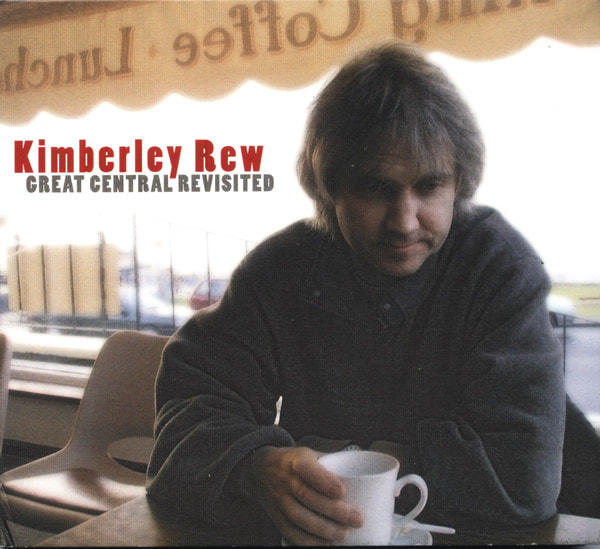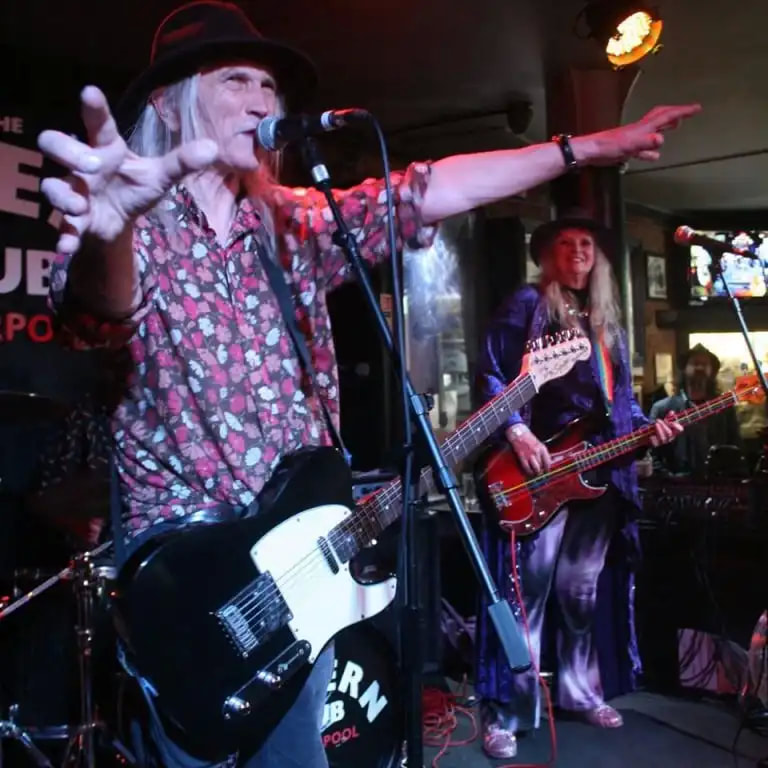|
By Kimberley Rew (Edited by Eric Sandberg) What gear did we use on Purple Kittens? To answer this I should go back a stage. In 2019 we recorded an album’s worth of songs at Remote Farm [outside Cambridge, UK], the old Katrina and the Waves studio, with sound man Steve Stewart. Meanwhile the order came from on high that we should put out a compilation album, which became Sunshine Walkers- The Best of Kimberley Rew and Lee Cave-Berry. This meant that, with an album ‘in the can’, we recorded another album in 2020. It was now the pandemic, and Steve was self isolating, so we transferred to Bookmatch studio [also outside Cambridge, UK], with owner operator Tim Bond. Lee and I had a growing feeling that the three instruments, guitar, bass and drums, should do more equal amounts of work to paint the sound picture, if you will, rather than guitar, plus overdubs, backed up by bass and drums. Inevitably the Purple Kittens album ended up being, itself, a compilation of these two sessions, so it is [part one] of a mixture of songs from two different sessions, in two studios, each with a different sound man. By the time we got to Bookmatch, the concept of guitar overdubs was fading out of our philosophy.This turned out to be a happy accident, as the studio is tiny, and there’s nowhere to put a guitar amp so that you could overdub while listening to the basic track and the overdub on the studio speakers as you play. You’d never hear it above the sound from your amp! Later on, on a session adding a guitar to Robyn Hitchcock recording, we solved this by using a speaker simulator. I’ve got four electric guitars and two acoustics, and I try not to leave any unplayed, which seems disrespectful to the guitars. *A 1969 Gibson SG Special, my first decent guitar, so one I did much learning on, which means there are a few things I can play on it that I can’t play on any other guitar! *A 1968 Gibson Les Paul gold top, which I bought in 1986 for £600. *A beautiful 1980s white Fender Stratocaster, which I inherited from Katrina and the Waves. Lee replaced the pickups with Fender Custom Shop Texas Specials (she’s a whizz with the soldering iron!) *A black Squier Telecaster, which I bought new in 2005. It also has Texas Specials, which means the pickups are worth more than the guitar. It's my ‘go anywhere’ guitar — you can play just about anything on it, with any combination of other musicians, tune it quickly, change strings quickly etc. *A 1961 Gibson J45 which I bought in 1986 for £500. Useful for streaming sessions from the spare room, during lockdowns. It’s very quiet, and our voices are very quiet, so you can balance the sound into a single microphone. *A Gibson Blues King- the ‘go anywhere’ acoustic- robust, positive sound, not too delicate. Remote Farm studio also comes with a Guild acoustic- I think it's an F50? Early 1970s? You can get loads of bangs for your buck 'on tape’ with this one. It’s on "I Can Be Any Woman," "Too Much Love" and "Growing Up Song." On the last two tracks, the instrumental sections are double tracked. I should also mention that throughout, Lee plays a 1972 sunburst Fender Precision bass. She usually prefers a medium scale bass, but this Precision, once again, seems to deliver more bangs per buck ‘onto tape’. You can also hear it on "Walking on Sunshine" by Katrina and the Waves. I should also also mention pedals. I like echo on guitars. Live, it’s a safety net, too. You forget to switch the thing off, and it becomes a sort of reassuring halo round any sloppy bits of playing. I have a maroon Boss echo pedal — it sounds the least ‘digital’ of any I’ve tried. You have a sound, you turn on the echo, then you have a sound plus echo which adds up to the total amount of sound you had before. So the echo’s using up some of your basic sound. In the studio, you can have the sound man add echo. Then you still have all of your basic sound, plus the echo, so I avoid using the echo pedal in the studio. Live, I find it easier to switch on a boost pedal, currently a black MXR with one knob, for a solo, than to turn up the volume knob on the guitar, then finish the solo, turn the guitar knob again, and start singing again! But this means you’re artificially boosting the sound going into the amp, and you don’t get that on the old records, which I like and try to emulate. So, again, I try to avoid the boost pedal in the studio. Now turning to amps. When the Fender Blues Junior came out about twenty years ago, I bought a black one, and it was the first proper, decently made, amp I owned that wasn’t deafeningly loud. I used this until it became increasingly unreliable — a conundrum. On the records I like, guitarists were using new gear, particularly amps, which were perceived as developing and improving all the time. Now things are moving much more slowly — there are no new sounds — and we are more conservative. So how long is your amp supposed to last? Probably not that long. Then you buy a new one, which I did, in tweed this time. But, because these things are mass produced now, it doesn’t sound the same. When the Marshall Origin amps came out in I think 2018, I bought one. Again, it’s the first proper sounding Marshall which isn’t deafeningly loud. Live, it has that Marshall gift, if you can get it working to the right percentage of its power — filling the room with a single note. But even that’s getting hard to achieve these days of quiet gigs in pub gardens with neighbors twitching the their curtains, poised to complain. So the earlier tracks from Remote Farm, "Kingdom of Love," "Wrong Song," "Unsatisfactory Cats" and "Daytime Night Time," have the old black Blues Junior, in the big room with the drums, and the later tracks, "Penny the Ragman," "You Can Rely On Me," "Black Ribbon," "Raspberry Ripple Ice Cream" and "Voyager" have the Marshall, set up in the very small store room, with the drums in the main, but still fairly small, room at Bookmatch, with probably some guitar spilling on the drums. I should also mention that we started with a theory that, on a song where I do lead vocal and acoustic guitar, the best sound is to go for both at the same time. So "Too Much Love" has this, where the sounds of the lead vocal and acoustic guitar interact. Here are the nine tracks with electric guitar, including the toggle settings and amps used: Penny the Ragman — Telecaster/Marshall, middle position, turn up the knob for the solo. You Can Rely On Me — Les Paul/Marshall, neck position. Clean sound thruout — you could mistake it for the Telecaster. Kingdom of Love — Telecaster/Blues Junior, bridge position, turn up the knob for the solo. Wrong Song — Stratocaster/Blues Junior, neck position — turn up the knob for the solo.It gets quite distorted in a classic Strat sort of a way. Black Ribbon — Telecaster/Marshall, bridge position, turn up the knob for the solo- there are gaps before and after the solo which make it a bit easier to do this! I wanted this to sound like Johnny Kidd and the Pirates. Raspberry Ripple Ice Cream — Les Paul/Marshall- bridge position, switch on the boost for the solo and leave it on! I wanted this to sound like Spoonful by Cream- of course it didn’t, but they’re both in E. Voyager — Telecaster/Marshall- middle position, clean sound throughout. Daytime Night Time — Les Paul/Blues Junior- bridge position. It’s got an overdubbed solo, also on the Les Paul. I wanted this to sound like Status Quo. Finally, there’s an overdubbed electric guitar on I Can Be Any Woman. It’s played by Ranjan Vasudevan, on a Gibson SG Custom, mostly swooping runs on a single string, in what I believe is the Carnatic style, or scale.
0 Comments
Leave a Reply. |
CategoriesAuthorsEric Sandberg: My true opinion on everything is that it's splunge. Archives
December 2022
Categories |
Proudly powered by Weebly









 RSS Feed
RSS Feed